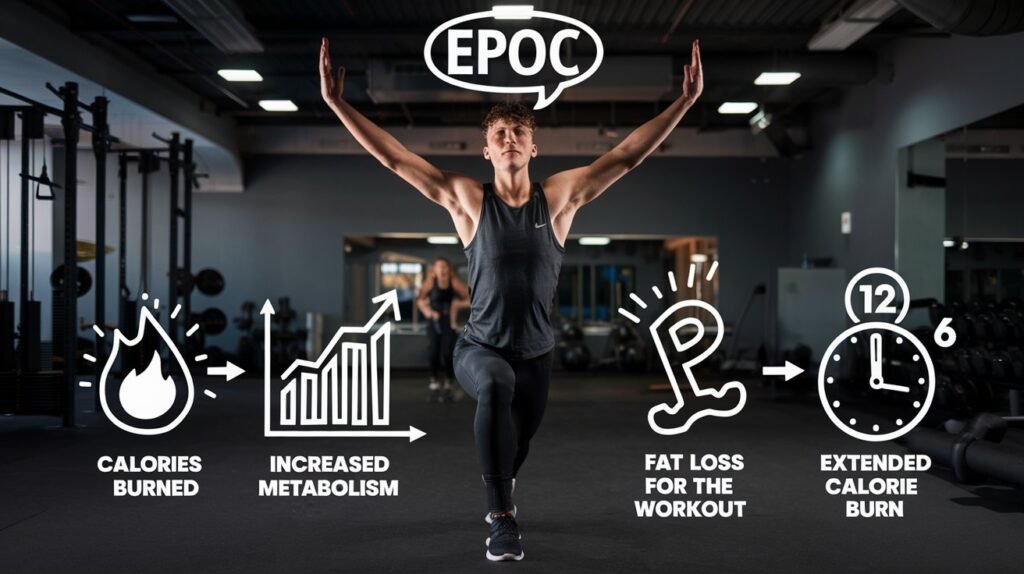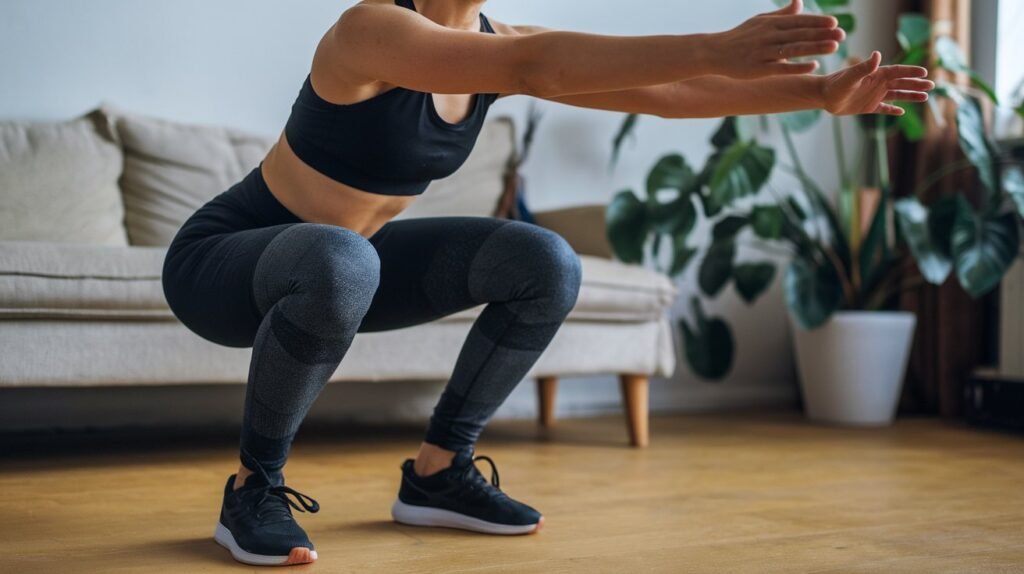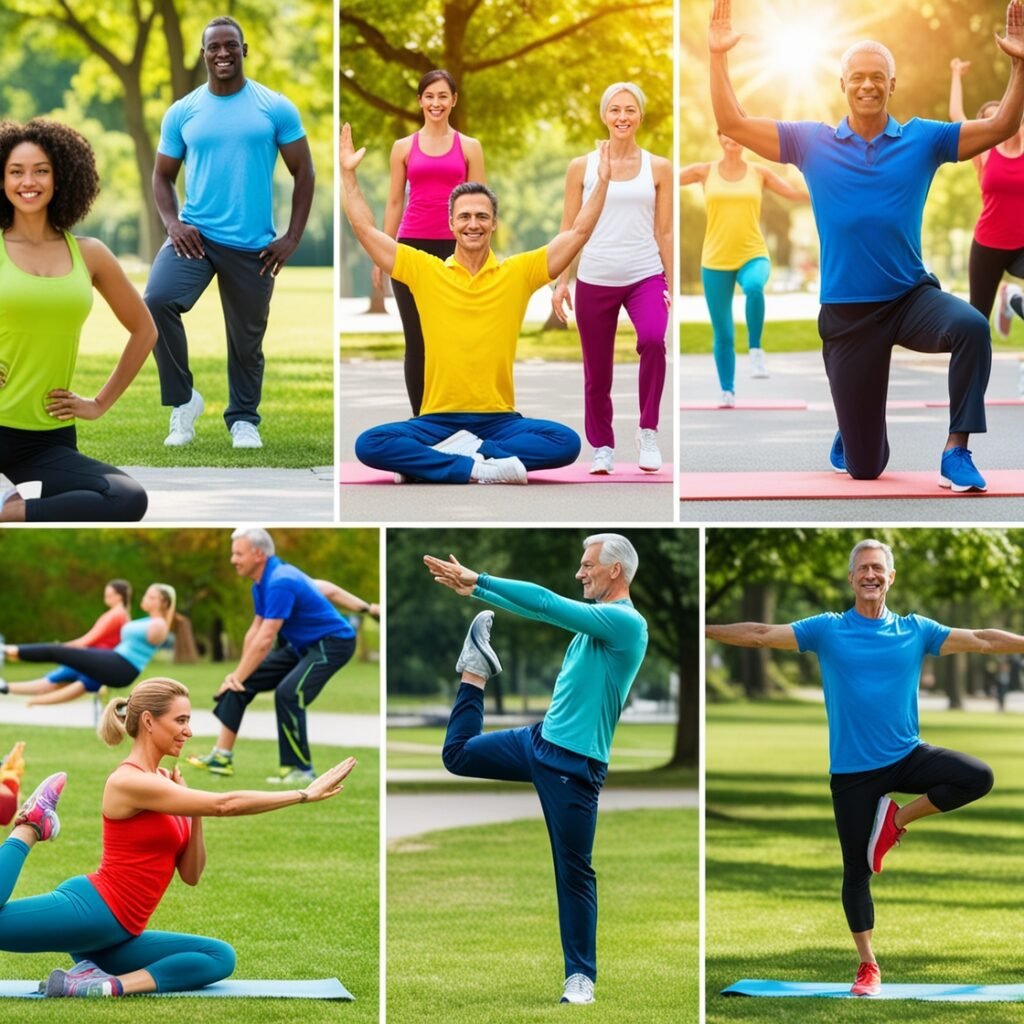Introduction
High-Intensity Interval Training, commonly known as HIIT, is one of the most effective and time-efficient workout methods. With the rise of busy schedules and the demand for quick results, HIIT has gained significant popularity among fitness enthusiasts. Whether you’re looking to burn fat, improve cardiovascular health, or boost your overall fitness, HIIT can be the solution.
We introduce beginners to HIIT, explaining what it is, why it works, and how to get started safely. We’ll cover the benefits of HIIT, offer sample workout routines, and provide essential tips for making the most out of your sessions.
Table of Contents
HIIT for Beginners
What is HIIT?
HIIT is a form of exercise that alternates between short, intense bursts of activity and periods of rest or low-intensity exercise. Unlike traditional steady-state cardio, HIIT pushes your body to its limits for short periods, allowing you to burn more calories in less time.
Key Features of HIIT:
- Short Duration: Typically, HIIT workouts last between 10 to 30 minutes.
- Intensity: High-intensity exercises are performed at 80-90% of your maximum heart rate.
- Rest Periods: Active recovery periods (e.g., walking or light jogging) help maintain a manageable workout intensity.
HIIT for Beginners: Benefits

1. Time-Efficient
One of the primary benefits of HIIT is its efficiency. Research shows that a 20-minute HIIT workout can deliver similar results to a 45-minute session of steady-state cardio . This makes it ideal for individuals with busy schedules who need effective exercise in a short amount of time.
2. Burns More Calories in Less Time
HIIT elevates your heart rate quickly, resulting in higher calorie burn compared to moderate-intensity exercise. According to a study published in the Journal of Sports Science & Medicine, participants performing HIIT burned up to 25–30% more calories compared to other forms of exercise .
3. Boosts Metabolism
After completing a HIIT session, your body continues to burn calories at a higher rate due to excess post-exercise oxygen consumption (EPOC), also known as the “afterburn effect.” This means you’ll keep burning calories long after your workout is over.
4. Improves Cardiovascular Health
HIIT has been shown to improve cardiovascular health by increasing oxygen consumption and strengthening the heart. It can also reduce blood pressure and improve cholesterol levels, making it beneficial for overall heart health.
5. No Equipment Required
One of the best aspects of HIIT for beginners is that you don’t need fancy gym equipment to get started. Many HIIT workouts rely on bodyweight exercises such as squats, lunges, and jumping jacks, making it accessible to anyone.
HIIT for Beginners: How Does it Work?
HIIT leverages your body’s energy systems in a unique way. During intense intervals, your body uses anaerobic energy (without oxygen), which results in lactic acid buildup and rapid exhaustion. During the rest periods, your body uses aerobic energy (with oxygen) to recover. This continuous switching between energy systems causes your body to burn more fat and calories compared to traditional cardio.
Example of a Basic HIIT Routine:
- Warm-Up (3–5 minutes): Light jogging or brisk walking.
- Interval 1 (30 seconds): Sprint as fast as you can.
- Rest 1 (60 seconds): Walk or jog lightly.
- Interval 2 (30 seconds): Do as many burpees as possible.
- Rest 2 (60 seconds): Walk or jog lightly.
- Repeat: Complete this cycle 4-6 times.
- Cool-Down (3–5 minutes): Light stretching or walking.
HIIT for Beginners: Best Exercises

Starting HIIT can feel intimidating, but with the right exercises, anyone can dive in safely. Here are some beginner-friendly moves to incorporate into your routine:
1. Jumping Jacks
A classic move that raises your heart rate while engaging the entire body. It’s easy to perform and can be modified for all fitness levels.
2. High Knees
This exercise gets your heart pumping quickly while strengthening your core and legs. It’s a simple way to introduce cardio into a HIIT routine.
3. Squat Jumps
Squat jumps combine strength and cardio. By engaging the lower body and pushing explosively off the ground, you’ll build power while burning calories.
4. Mountain Climbers
This move engages your core, shoulders, and legs. It’s an excellent way to build core strength while keeping your heart rate elevated.
5. Burpees
Though challenging, burpees are one of the most effective full-body exercises. They combine strength, cardio, and flexibility, making them ideal for a HIIT session.
Sample HIIT for Beginners
| Exercise | Duration | Rest |
|---|---|---|
| Jumping Jacks | 30 seconds | 15 seconds |
| High Knees | 30 seconds | 15 seconds |
| Squat Jumps | 30 seconds | 15 seconds |
| Mountain Climbers | 30 seconds | 15 seconds |
| Burpees | 30 seconds | 15 seconds |
| Repeat cycle 3-4 times |
HIIT for Beginners: How to Get Started?

Starting with HIIT doesn’t require any special skills, but it’s important to ease into the process and allow your body to adapt. Here are steps to get started:
1. Choose Your Exercises
For beginners, it’s essential to pick exercises that match your fitness level. Bodyweight exercises such as squats, push-ups, and jumping jacks are easy to perform and highly effective.
2. Set Your Intervals
Start with intervals of 20–30 seconds of intense exercise followed by 40–60 seconds of rest. As you progress, you can reduce the rest time and increase the workout intervals.
3. Start Slow
As a beginner, it’s vital to avoid pushing yourself too hard right away. Start with 10–15 minute HIIT sessions 2-3 times per week and gradually increase the intensity as your fitness level improves.
4. Focus on Form
Maintaining proper form is crucial to avoid injury. Focus on mastering the technique of each exercise before increasing speed or intensity.
5. Stay Consistent
Consistency is key to success with HIIT. Even if you’re only able to complete short sessions initially, staying consistent will lead to improved stamina, strength, and fat loss.
Common HIIT Mistakes to Avoid
1. Skipping Warm-Up and Cool-Down
Skipping these essential steps can lead to injury. Always spend at least 3-5 minutes warming up your muscles and cooling down after a HIIT session.
2. Not Resting Enough
Beginners often try to push too hard without adequate rest. Make sure you allow enough recovery between intervals to prevent burnout and injury.
3. Overdoing It
HIIT is intense by nature, so overdoing it can lead to exhaustion or injury. Start with 2-3 sessions per week, and as your endurance improves, you can increase the frequency.
HIIT for Beginners: Statistics on the Effectiveness of HIIT
Several studies have demonstrated the effectiveness of HIIT for fat loss and fitness improvement:
- A 2012 study found that 20 minutes of HIIT three times a week reduced body fat significantly more than 40 minutes of moderate cardio five times a week .
- Research from the American College of Sports Medicine (ACSM) shows that participants burned 6-15% more calories during HIIT sessions compared to traditional steady-state cardio .
| Study | Calories Burned (per 30 min) |
|---|---|
| Traditional Steady-State Cardio | 200-300 calories |
| HIIT (according to ACSM) | 400-600 calories |
The Role of Nutrition in HIIT
No matter how effective your workouts are, proper nutrition is critical for achieving the best results with HIIT. Ensure you’re fueling your body with balanced meals that include lean proteins, healthy fats, and complex carbohydrates.
Pre-HIIT Nutrition:
- Focus: Light, easily digestible meals 1-2 hours before a session (e.g., a banana with peanut butter).
Post-HIIT Nutrition:
- Focus: Protein and carbohydrates to replenish energy and support muscle recovery (e.g., a protein shake or grilled chicken with quinoa).
Conclusion of HIIT for Beginners
HIIT is an incredible tool for anyone looking to improve their fitness in a short amount of time. As a beginner, starting with short, manageable sessions will help you build endurance and strength over time. The key is consistency, proper form, and ensuring you’re giving your body the rest and recovery it needs.
With the right approach, HIIT can help you burn fat, improve cardiovascular health, and boost your overall fitness—no matter your starting point. Whether you’re exercising at home or in the gym, the flexibility and effectiveness of HIIT make it an excellent choice for beginners.
References
- Gibala, M. J., & McGee, S. L. (2008). “Metabolic adaptations to short-term high-intensity interval training: a little pain for a lot of gain?” Exercise and Sport Sciences Reviews.
- Boutcher, S. H. (2011). “High-Intensity Intermittent Exercise and Fat Loss.” Journal of Obesity, 2011. https://doi.org/10.1155/2011/868305
- American College of Sports Medicine. (2014). “High-Intensity Interval Training.” https://www.acsm.org/docs/default-source/files-for-resource-library/high-intensity-interval-training.pdf
- Astorino, T. A., & Schubert, M. M. (2014). “Individual Responses to Completion of Short-term and Chronic Interval Training.” Journal of Strength and Conditioning Research, 28(3), 749–760. https://doi.org/10.1519/JSC.0b013e3182a1f5a0
- Talanian, J. L., Galloway, S. D. R., Heigenhauser, G. J. F., Bonen, A., & Spriet, L. L. (2007). “Two weeks of high-intensity aerobic interval training increases the capacity for fat oxidation during exercise in women.” Journal of Applied Physiology, 102(4), 1439-1447. https://doi.org/10.1152/japplphysiol.01098.2006
- Lunt, H., Draper, N., Marshall, H. C., Logan, F. J., Hamlin, M. J., Shearman, J. P., & Cotter, J. D. (2014). “High-intensity interval training in a real-world setting: a randomized controlled feasibility study in overweight inactive adults, measuring change in maximal oxygen uptake.” PLOS ONE, 9(1), e83256. https://doi.org/10.1371/journal.pone.0083256




